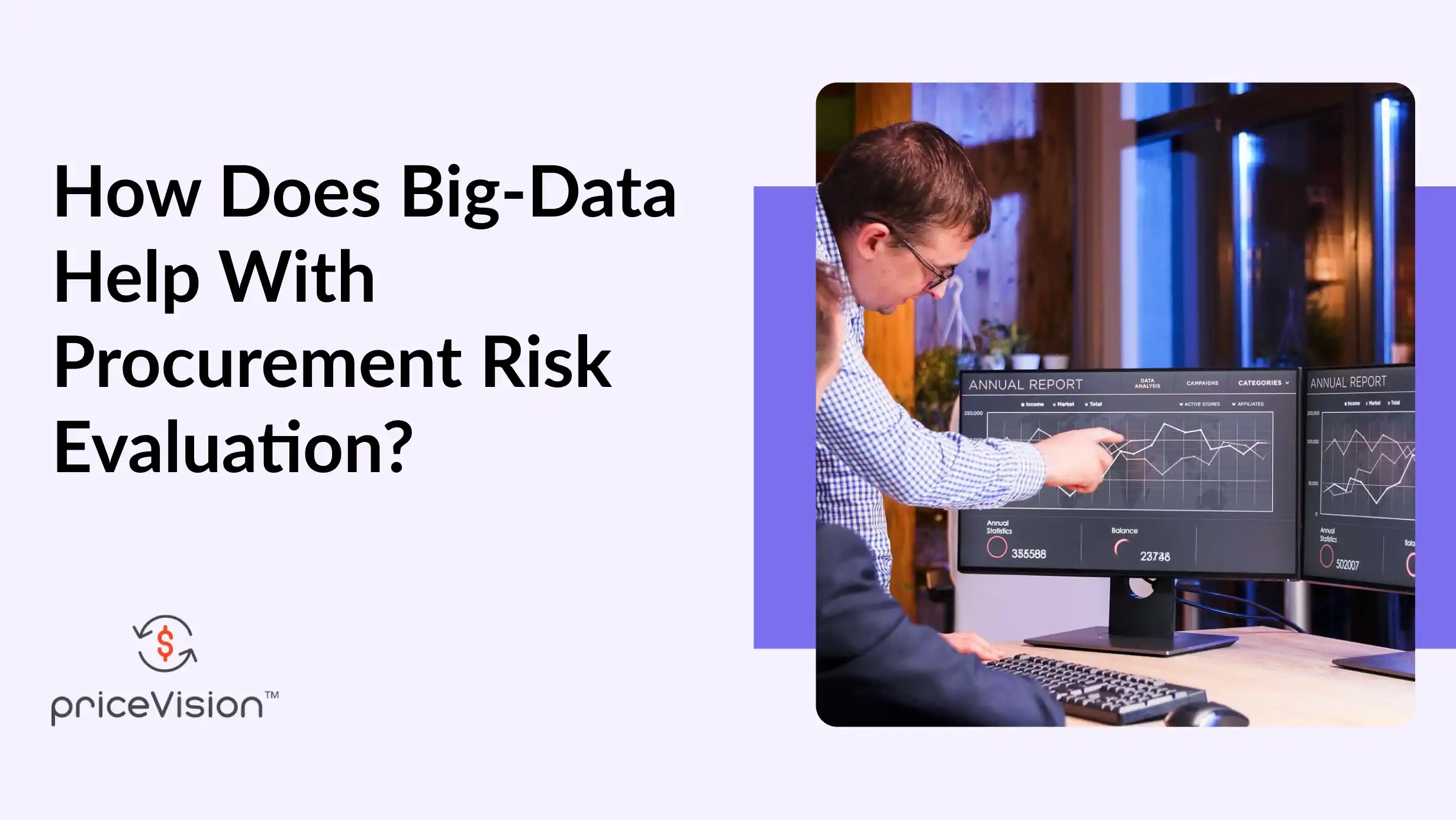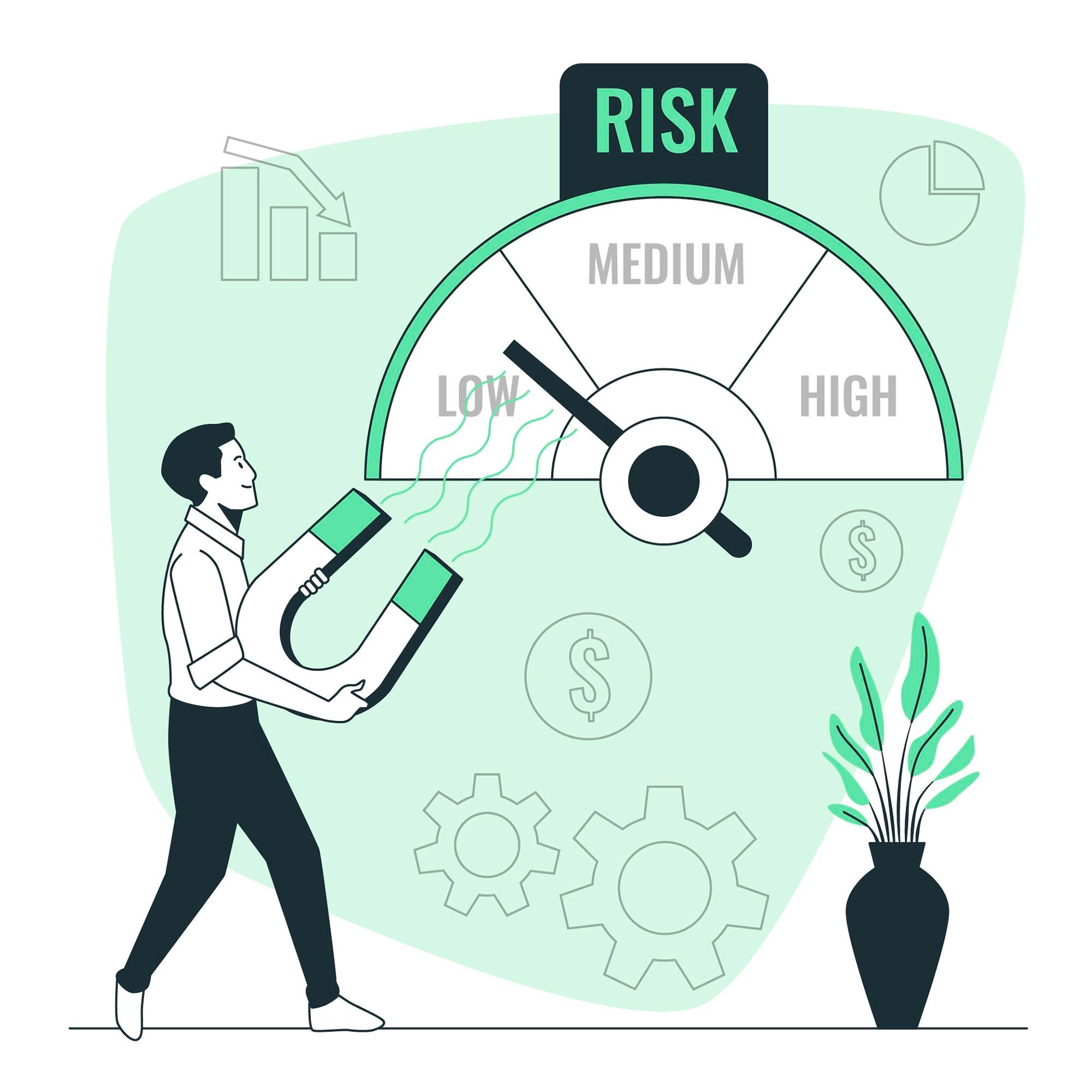How does big-data help with Procurement risk evaluation?

Procurement departments stand to benefit greatly from the availability of new digital technologies and the big data analytics they bring. Businesses are always on the lookout for ways to save expenses, decrease risk, improve efficiency, and increase profit margins. Also, governments have an expectation that enterprises will follow all regulations across the supply chain. Consumers are also putting pressure on businesses to do the right thing when it comes to ethical sourcing. The value of data-driven purchasing is undeniable. Chief procurement officers (CPOs) may optimize the supply chain and be more prepared for external events that might disrupt operations by integrating historical data, real-time information, and customer insights.
Commodity price evaluation
Determining a commodity's true worth under ideal market circumstances is the essence of commodity valuation. In a competitive free market, a commodity's price would reflect its value. The break-even point—when supply equals demand—has been used to price commodities.
Commodity price Evaluation forecast
The 21 percent drop in commodity prices forecast for this year is followed by relative stability in 2024. In 2023, prices are predicted to plummet by the most they have since the epidemic. Average energy costs are projected to drop by 23% in 2023 compared to 2022, before leveling out in 2024. Since many of the elements that have created shocks in commodities markets in recent years are still present, the risks to the projection are skewed to the upside. These variables include probable delays in the supply of energy and metals (in part owing to trade restrictions), rising geopolitical tensions, a stronger-than-anticipated rebound in China's industrial sector, and unfavorable weather occurrences. The biggest threat is unsatisfactory development throughout the world.
In the first quarter of 2023, global commodity prices plummeted 14% and were 30% below their June 2022 peak. Economic activity, milder-than-average winter weather, and global commodities trade patterns may have contributed to the price drop.
Procurement risk evaluation
The possibility of problems occurring during the procurement process is known as "procurement risk." Businesses may improve their supply chain efficiency and reduce the likelihood of fraud, subpar goods, late delivery, and excessive costs by conducting a thorough risk analysis of their procurement processes. Failure in a company's procedures for acquiring needed materials, labor, or supplies is known as "Procurement risk evaluation." A company's expenditures must be supported by auditable transaction records.
The Major Shift to Procurement 4.0
Negotiation strategies and competitive contracting are commonplace in procurement work, and these practices assist maximize stock and cut down on wasteful expenditure. Therefore, businesses see procurement as a vital technique for differentiating themselves in the market. Purchasing processes are becoming more digitized and automated at present. This frees up resources, allowing companies to concentrate on more strategic concerns.
The primary purpose of Industry 4.0 is the seamless integration of technology with business objectives. Therefore, Industry 4.0 competencies should be at the heart of Procurement 4.0. Artificial intelligence (AI), process automation, and big data analytics are all examples.
The Major Applications of Procurement Information
As a result of digitization, data has increased in volume, variety, and velocity at an exponential rate. In-depth analysis of complicated procurement data aids in information filtering, cost reduction, and fraud prevention. However, due to intense competition, experts have to work quickly without making any hasty judgments. Thus, the use of big data analytics will aid procurement experts in gaining transparent, trustworthy, and useful insights.
There are three main ways in which analytics applied to big data improve procurement performance
- Budget Analyses
- Promotes openness about how money is being used.
- Analytics for Categories
Big Data Is the Future of Procurement
The current early adopters are poised at the fulcrum of the junction of artificial intelligence (AI) and procurement systems. Completely unified AI end-to-end systems are still a ways off, but they are rapidly approaching. Big data will continue to expand as the number of connected devices in the IoT rises. According to IDC's "The Digitization of the World - From Edge to Core" research, the Global Datasphere will increase from 33 Zettabytes (ZB) in 2018 to 175 ZB by 2025.
With this much information at their disposal, learning machines can anticipate and investigate almost every conceivable procurement situation. It will be increasingly difficult to compete without integrating big data analytics into your buying procedures.
What is the biggest risk in procurement?
Without a thorough risk assessment and management strategy, each one of these threats may and will have a detrimental effect on your company.
● Failure to Accurately Assess Needs.
● Problems in Sourcing and Vendor Management.
● No Supply Risk Management in Place.
● Lack of mature methods for handling contracts.
● Failure to use automation.
● Poor Preparation for Purchasing.
● Improve Communication with Vendors.

Mitigating the Risk
Regardless of your business's connection with suppliers or account size, you may query price spikes and demand explanations. In addition, you have the option of capping price rises at a certain rate, maybe in accordance with the CPI. However, proof is still required, such as a breakdown of where the percentage increase lies within the cost breakdown (labor, raw materials, etc.).
In addition to providing packaged, pre-negotiated contracts that give a reduced price up front, GPOs will also aid businesses in maintaining complete pricing transparency and ensuring that rates do not rise under any circumstances. This frees up more time and resources for procurement to focus on strategic endeavors, with the confidence that they can still achieve the targeted cost reductions.
Who is responsible for risk management in procurement?
There are a variety of potential negative outcomes at each phase of the procurement process. Each member of staff participating in the procurement process has a professional obligation to mitigate these dangers.
Conclusion
Procurement specialists might optimize the supply chain and respond to interruptions caused by geopolitical tensions and pandemics with the use of big data analytics, which would allow them to integrate historical data, real-time information, and customer insights. The worldwide market for big data analytics in procurement is expected to expand thanks to digitalization activities over the coming decade. In addition, cutting-edge developments like the metaverse, blockchain, and AI are inspiring new ways of thinking about procurement and its applications.
Procurement professionals have little access to effective implementation methodologies, despite the numerous advantages of big data analytics. Therefore, most companies lack a strategy to use big analytics technologies for procurement purposes, particularly manufacturers. Integration of big data analytics capabilities into current procedures will determine how quickly Procurement 4.0 develops.